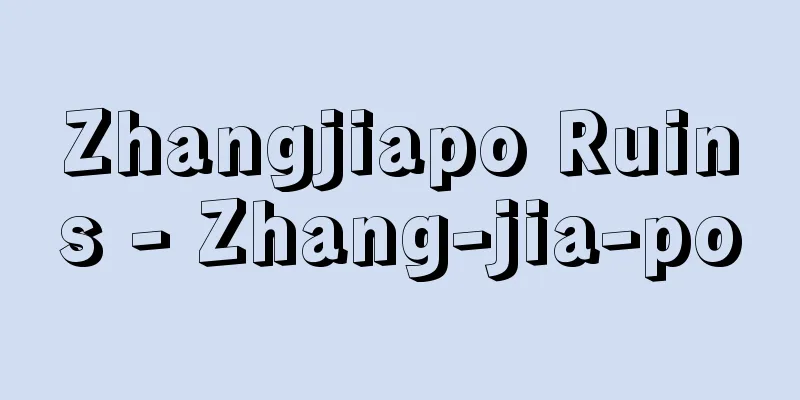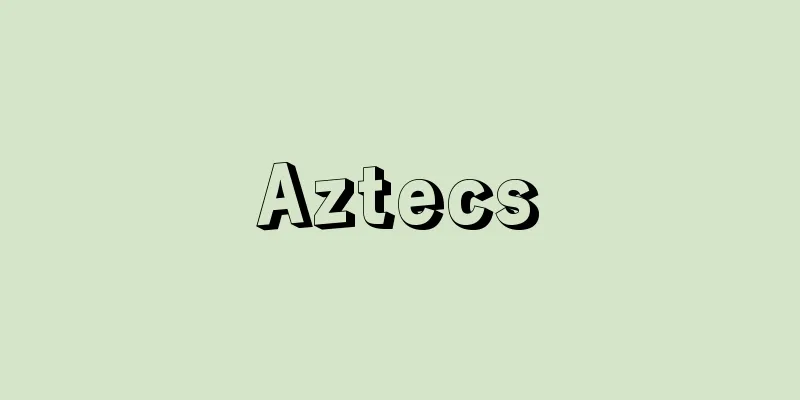Taoka Reiun - Taoka Reiun

|
Critic and Chinese literature scholar. His real name was Sayoji. He was born on November 21, 1870 in Ishii Village, Tosa County, Kochi Prefecture (present-day Kochi City). His father was a low-ranking samurai, and after the Meiji Restoration, he ran a pawnbroker's business. As a boy, he participated in the Tosa Civil Rights Movement, and after graduating from the Fisheries Training School (later Tokyo University of Fisheries, now Tokyo University of Marine Science and Technology), he became a selected student in the Department of Chinese Literature at the Faculty of Letters of the Imperial University. During his time at university, he attracted attention as a budding critic with his criticism of Yamaji Aizan, his pioneering biography of Heine, and his analysis of Su Dongpo. From 1895 (Meiji 28), the year after graduating, he mainly wrote literary criticism for the magazine "Seinenbun," and during the period of "postwar literature" following the Sino-Japanese War, he was one of the first to praise Higuchi Ichiyo, and recognized the unique writing styles of Izumi Kyoka and Emi Suiin, among others, and was a remarkable advocate of the new postwar literature, with his collection of essays, "Reiun Yoei" (1899), becoming a best-seller at the time. Unlike Takayama Chogyu's romanticism, which was linked to the nationalism of the time, Reiun's romanticism was linked to popular humanism, as is evident from works such as "The Poet and Humanity." After that, while experiencing misfortune and wanderings typical of the Romantic school, he matured as a democratic thinker critical of the Meiji regime, publishing many collections of essays and translations and studies of Chinese literature, but each collection was banned, and he died on September 7, 1912. It was only after World War II that he began to receive a full evaluation, and after the defeat, Nishida Masaru (1928-2021) published "Taoka Reiun Selections" (1956, Aoki Bunko) and Ienaga Saburo (1913-2002) published "The Life of a Strange Thinker" (1954, Iwanami Shinsho). [Hideo Odagiri] "The Complete Works of Reiun Taoka, 8 volumes (1969-, Hosei University Press)" ©Shogakukan Library "> Taoka Reiun Source: Shogakukan Encyclopedia Nipponica About Encyclopedia Nipponica Information | Legend |
|
評論家、中国文学者。本名は佐代治(さよじ)。明治3年11月21日高知県土佐郡石井村(現、高知市)に生まれる。父は下級の武士、維新後は質屋を営む。少年時代に土佐民権の運動に参加、水産伝習所(のち東京水産大学。現、東京海洋大学)を経て帝国大学の文科大学漢学科に選科生となる。在学中に山路愛山(やまじあいざん)批判や先駆的なハイネ伝や蘇東坡(そとうば)論で新進批評家として注目を受ける。卒業翌年の1895年(明治28)からは主として『青年文』誌に文芸評論を書き、日清(にっしん)戦後の「戦後文学」高揚期に樋口一葉(ひぐちいちよう)をいち早く評価し、泉鏡花、江見水蔭(えみすいいん)らの独自な作風を認めるなど、戦後の新文学を擁護して目覚ましい活動を展開、その評論集『嶺雲揺曳(ようえい)』(1899)は当時としてのベストセラーになった。高山樗牛(ちょぎゅう)の浪漫(ろうまん)主義が時流の国家主義と結び付いていたのと違って、嶺雲の浪漫主義は「詩人と人道」などという文章があることからも知られるように民衆的なヒューマニズムと結び付いていた。その後、浪漫派らしい不遇と遍歴を重ねながら、明治体制に対する批判的なデモクラティックな思想家として成熟してゆき、多くの評論集や中国文学の翻訳・研究などを出したが、評論集はそのつど発売禁止となり、大正元年9月7日に没した。彼への十分な評価はようやく第二次世界大戦後になって行われ始め、敗戦後、西田勝(まさる)(1928―2021)による『田岡嶺雲選集』(1956・青木文庫)、家永三郎(いえながさぶろう)(1913―2002)による『数奇なる思想家の生涯』(1954・岩波新書)が出された。 [小田切秀雄] 『『田岡嶺雲全集』全8巻(1969~ ・法政大学出版局)』 ©小学館ライブラリー"> 田岡嶺雲 出典 小学館 日本大百科全書(ニッポニカ)日本大百科全書(ニッポニカ)について 情報 | 凡例 |
>>: Ellipsoid - Daenmen (English spelling)
Recommend
Glyceride - Glyceride
A general term for ester compounds of glycerol (g...
Bellows - Bellows
Humans first learned to use metals when they disco...
Ornithoptera victoriae
…[Takakura Tadahiro]. … *Some of the terminology ...
Oxkerite
…A type of mineral wax. It is also called ozokeri...
Synergist
A drug that has no efficacy by itself, but when mi...
Non-Departmental Ministers
… In the United Kingdom, known as the birthplace ...
Girima - Girima
… [Europe] Europe tends to have the impression th...
Castelfranco, G.da (English spelling) CastelfrancoGda
Giorgio da Castelfranco was an Italian painter an...
Curse - Curse
A curse is an evil act that uses mystical means to...
Unio Moustica - Unio Moustica
...Although this already suggests an experience t...
Upupidae
...An illustration of a bird from the Upupidae fa...
Chef - ryorinin
〘 noun 〙 A person who cooks. A person whose occupa...
EPU - Electronic Productivity Unit
European Payments Union. Launched in 1950, it was ...
Safety fuse - Anzendokasen
...used for igniting industrial detonators and fi...
Delaunay - Robert Delaunay
French painter. Born in Paris. Initially influenc...


![Motegi [town] - Motegi](/upload/images/67cd04bd747e3.webp)






